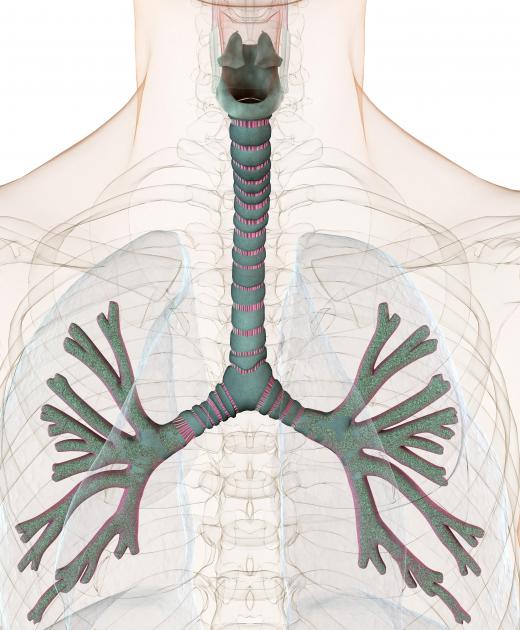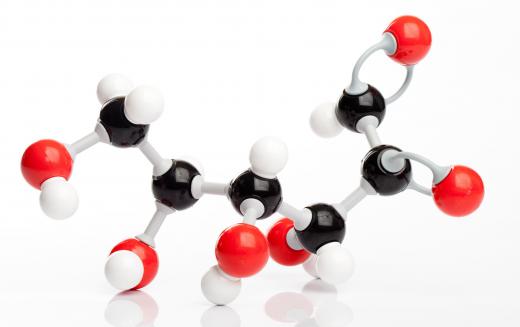What is Aerobic Metabolism?
Aerobic metabolism uses oxygen to removing energy from glucose and stores it in a biological molecule called adenosine triphosphate (ATP). ATP is the human body's source of energy, and breaking apart ATP molecules releases energy that is used for a variety of biological processes, including movement of molecules across membranes. Aerobic metabolism is also called aerobic respiration, cellular respiration, and aerobic cellular respiration. Anaerobic metabolism is another form of metabolism, but occurs without oxygen but the human body is not built to maintain anaerobic respiration for a long time, and doing so causes great stress.
The first stage of aerobic metabolism is called glycolysis. Glycolysis happens in the cytoplasm of the cell. Complex sugars are broken down into glucose by a variety of enzymes, and this glucose is then broken down further into two molecules of pyruvic acid, otherwise known as pyruvate. The energy released by this breakdown is stored in two molecules of ATP. Glycolysis is unique in that it is the only stage of metabolism to occur in the cytoplasm, and the other two stages occur inside the mitochondria.

In the second stage of aerobic metabolism, called the citric acid cycle, the two molecules of pyruvate are used to create energy-rich reducing molecules that are used later on in the respiration process. Some of these molecules can be converted directly to ATP if necessary, although this doesn't always happen. Water and carbon dioxide are produced as waste products from this cycle, which is the reason human beings breathe in oxygen and breathe out carbon dioxide. The citric acid cycle, like glycolysis, yields 2 ATP.

The finalstage of aerobic metabolism is called the electron transport chain and occurs on the inner membrane of the mitochondria. In this step, the energy-rich molecules derived from the citric acid cycle are used to sustain a gradient of positive charge, called a chemiosmotic gradient, that is used to generate many molecules of ATP. This step generates the most ATP out of the aerobic metabolism process, creating an average of about 32 ATP molecules. After the electron transport chain has generated ATP, the energy rich molecules are free to be reused by the citric acid cycle.

Aerobic metabolism generates approximately 36 molecules of ATP. Anaerobic respiration generates only about ten percent of that amount. The use of oxygen is most important at the end of the electron transport chain, as it aids the chemiosmotic gradient. The existence of oxygen-dependent metabolism is why mitochondria are commonly known as the body's powerhouse.
AS FEATURED ON:
AS FEATURED ON:













Discussion Comments
What is oxygen consumption in muscle cells? I want to know more details about it.
Post your comments